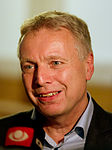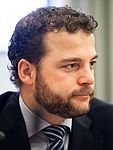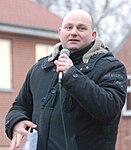2015 Danish general election
| |||||||||||||||||||||||||||||||||||||||||||||||||||||||||||||||||||||||||||||||||||||||||||||||||||||||||
All 179 seats to the Folketing 90 seats are needed for a majority | |||||||||||||||||||||||||||||||||||||||||||||||||||||||||||||||||||||||||||||||||||||||||||||||||||||||||
|---|---|---|---|---|---|---|---|---|---|---|---|---|---|---|---|---|---|---|---|---|---|---|---|---|---|---|---|---|---|---|---|---|---|---|---|---|---|---|---|---|---|---|---|---|---|---|---|---|---|---|---|---|---|---|---|---|---|---|---|---|---|---|---|---|---|---|---|---|---|---|---|---|---|---|---|---|---|---|---|---|---|---|---|---|---|---|---|---|---|---|---|---|---|---|---|---|---|---|---|---|---|---|---|---|---|
| |||||||||||||||||||||||||||||||||||||||||||||||||||||||||||||||||||||||||||||||||||||||||||||||||||||||||
| |||||||||||||||||||||||||||||||||||||||||||||||||||||||||||||||||||||||||||||||||||||||||||||||||||||||||
General elections were held in Denmark on 18 June 2015 to elect the 179 members of the Folketing. 175 members were elected in Denmark, two in the Faroe Islands and two in Greenland.
Background
Following the last general election, a minority government was formed by the Social Democrats, the Social Liberal Party and the Socialist People's Party. The government was supported by the Red-Green Alliance. Helle Thorning-Schmidt, the leader of the Social Democrats, became Prime Minister.
The government had rocky relations with the Red-Green Alliance, relying on their ad hoc support to pass bills instead of a formalized alliance. They have occasionally preferred to cooperate with Venstre to pass legislation.[1] Symbolically, Red-Green deputy Frank Aaen told Finance Minister Bjarne Corydon "Happy New Year" on 28 February 2013, because the government had failed to meet with his party since the beginning of 2013.[1]
On 3 February 2014, the Socialist People's Party left the government in protest over the sale of shares in the public energy company DONG Energy to the investment bank Goldman Sachs. This sparked a crisis within the Socialist People's Party, as three former cabinet ministers left the party, joining either the Social Democrats or the Social Liberal Party. However, the Socialist People's Party continued to support the government on confidence motions, preventing an early election.
The incumbent government prior to the elections consisted of a coalition between the Social Democrats and Social Liberal Party, with Helle Thorning-Schmidt continuing as Prime Minister. The cabinet was composed of 13 Social Democratic ministers and 7 Social Liberal ministers.
Electoral system
The 179 members of the Folketing are elected in Denmark (175), the Faroe Islands (2) and Greenland (2). The 175 seats in Denmark consist of 135 seats elected in ten multi-member constituencies by proportional representation, using a modified version of the Sainte-Laguë method and Hare quota, and 40 "top-up" seats, which are allocated to parties in order to address any imbalance in the distribution of the constituency seats.[2]
According to the Danish Constitution, the election had to be held no later than 15 September 2015, since the last election was held on 15 September 2011. The Prime Minister was able to call the election at any date, provided it is no later than four years from the previous election. On 27 May Thorning-Schmidt announced that the elections would be held on 18 June 2015.
Opinion polls
Polls notably underestimated the eventual result by the Danish People's Party.[3][4]
| Polling Firm | Date | V | A | O | B | F | Ø | I | C | K | Å | Lead | Red (A+B+F+Ø+Å) |
Blue (V+O+I+C+K) |
|---|---|---|---|---|---|---|---|---|---|---|---|---|---|---|
| Gallup | June 17 | 20.6 | 25.9 | 18.1 | 5.2 | 5.3 | 8.0 | 7.1 | 3.8 | 1.1 | 4.7 | 5.3 | 49.2 | 50.7 |
| Greens | June 17 | 20.9 | 24.4 | 18.5 | 5.6 | 5.4 | 8.5 | 7.6 | 3.3 | 0.6 | 5.2 | 3.5 | 49.1 | 50.9 |
| Voxmeter | June 17 | 19.6 | 25.9 | 17.2 | 4.6 | 6.3 | 9.8 | 7.7 | 3.5 | 0.9 | 4.5 | 6.3 | 51.1 | 48.9 |
| Epinion | June 17 | 20.6 | 24.5 | 18.0 | 5.2 | 5.3 | 9.3 | 7.5 | 3.9 | 0.7 | 4.9 | 4.3 | 49.2 | 50.7 |
| Megafon | June 17 | 20.6 | 25.5 | 17.9 | 5.0 | 5.2 | 8.6 | 7.7 | 3.9 | 0.9 | 4.6 | 5.1 | 48.9 | 51.0 |
Results
For Denmark proper, the “Red” bloc (A+B+F+Ø+Å) won 85 seats and the “Blue” bloc (V+O+I+C+K) 90 seats. Even with all of the extra four seats from Greenland and the Faroe Islands going to the “Red” bloc, it would still be one seat behind the “Blue” bloc.
| Party | Votes | % | Seats | +/– |
|---|---|---|---|---|
| Denmark proper | ||||
| Social Democrats (A) | 925,288 | 26.3 | 47 | +3 |
| Danish People's Party (O) | 741,173 | 21.1 | 37 | +15 |
| Venstre (V) | 684,223 | 19.5 | 34 | –13 |
| Red–Green Alliance (Ø) | 273,870 | 7.8 | 14 | +2 |
| Liberal Alliance (I) | 264,449 | 7.5 | 13 | +4 |
| The Alternative (Å) | 168,585 | 4.8 | 9 | New |
| Danish Social Liberal Party (B) | 160,672 | 4.6 | 8 | –9 |
| Socialist People's Party (F) | 148,027 | 4.2 | 7 | –9 |
| Conservative People's Party (C) | 118,015 | 3.4 | 6 | –2 |
| Christian Democrats (K) | 29,148 | 0.8 | 0 | 0 |
| Other parties | 3,027 | 0.1 | 0 | – |
| Invalid/blank votes | 40,068 | – | – | – |
| Total | 3,556,545 | 100 | 175 | 0 |
| Registered voters/turnout | 4,145,321 | 85.8 | – | – |
| Faroe Islands | ||||
| Republic | 5,730 | 24.5 | 1 | +1 |
| Social Democratic Party | 5,666 | 24.3 | 1 | 0 |
| Union Party | 5,500 | 23.5 | 0 | –1 |
| People's Party | 4,368 | 18.7 | 0 | 0 |
| Progress | 749 | 3.2 | 0 | New |
| Centre Party | 605 | 2.6 | 0 | 0 |
| Self-Government Party | 403 | 1.7 | 0 | 0 |
| Independents | 345 | 1.5 | 0 | 0 |
| Total | 23,366 | 100 | 2 | 0 |
| Greenland | ||||
| Inuit Ataqatigiit | 7,904 | 38.5 | 1 | 0 |
| Siumut | 7,831 | 38.2 | 1 | 0 |
| Atassut | 1,526 | 7.4 | 0 | 0 |
| Democrats | 1,753 | 8.5 | 0 | 0 |
| Partii Naleraq | 962 | 4.7 | 0 | New |
| Invalid/blank votes | 538 | – | – | – |
| Total | 20,514 | 100 | 2 | 0 |
| Registered voters/turnout | 41,048 | 50.0 | – | – |
| Source: DST, KVF, Valg | ||||
Aftermath
This section needs expansion. You can help by adding to it. (June 2015) |
Although the Social Democrats increased their share of the vote and won more seats, the "Blue" opposition bloc led by Rasmussen (Venstre, Danish People's Party, Liberal Alliance, Conservative People's Party, and Christian Democrats) gained more votes than the "Red" Social Democrat-led bloc (Social Democrats, Red–Green Alliance, The Alternative, Social Liberals, and Socialist People's Party), and Thorning-Schmidt resigned as party leader the day after the elections. Rasmussen is expected to lead negotiations around forming a government, although the possibility of Dahl making a bid to be Prime Minister has also been raised.[5]
References
- ^ a b The Red Marriage is broken (in Danish), Dagbladet Information, April 4, 2013
- ^ Electoral system IPU
- ^ Danish election: Opposition bloc wins BBC News, 19 June 2015
- ^ http://www.politico.eu/article/six-takeaways-from-the-danish-elections/
- ^ Danish election: Opposition bloc wins BBC News, 19 June 2015








